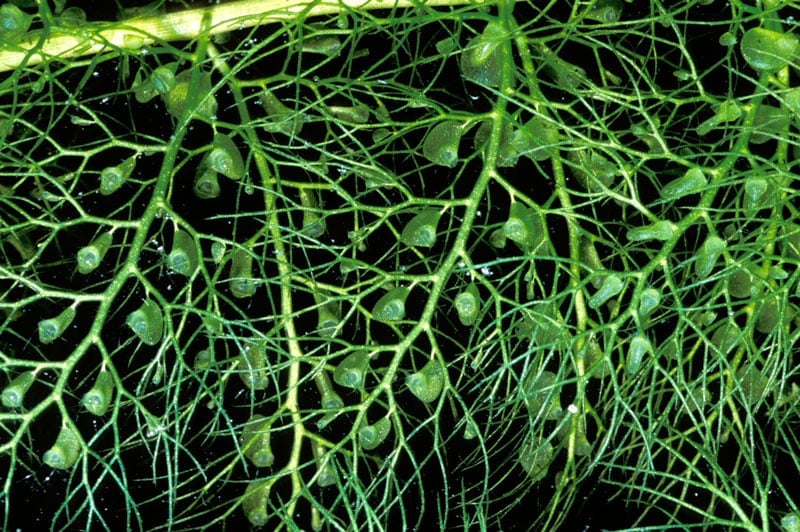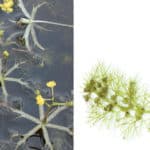Bladderwort
Other Common Names:
(Utricularia)
Native
Bladderwort has yellow flowers and small bladders attached to the leaf like branches, which are alternately arranged.
Management Options
Click here for more information on how to control bladderwort.
Description
Bladderwort is a submersed free floating plant. It lacks true roots and has thin stems, less than one-sixteenth of an inch thick, and stems range in size from a few inches to several feet long. It has leaf like branches that are divided and fork three to seven times on the ends. Tiny bladders scattered on the branches are transparent and green when young and dark brown or black when mature. They are attached at regular intervals along the linear leaf segments. Because it is a carnivorous plant, bladderwort can survive in low nutrient environments. The bladders trap and digest tiny aquatic creatures, providing more nutrition for the plant. Prey range in size from one celled Euglena to organisms the size of mosquito larvae. Bladderwort flowers have two lips that look like Snapdragons and are usually bright yellow (but sometimes lavender, depending on species). Flowers are on long stalks that emerge several inches above the water.
Location
Bladderwort can be found across the United States.
Propagation
winter buds, fragments
Management Options
Click here for more information on how to control bladderwort.



